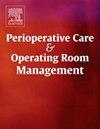Advanced forecasting of emergency surgical case arrivals: Enhancing operating room performance
IF 1
Q2 Nursing
Perioperative Care and Operating Room Management
Pub Date : 2024-11-30
DOI:10.1016/j.pcorm.2024.100451
引用次数: 0
Abstract
Background and Objectives
This study, conducted at a major regional hospital in Australia, aims to enhance operating theatre performance by developing a two-step forecasting method for emergency case arrivals. By analysing data from 2018 to 2022, the study seeks to improve operating room efficiency and reduce cancellations through accurate predictions of emergency surgery demands.
Methods
In the first step, several forecasting models, including Prophet, ARIMA, SARIMAX, LSTM, and Agent-Based Simulation, were evaluated for their effectiveness in predicting daily emergency case arrivals. Each model was trained on 80 % and tested on 20 % of data to replicate real-world forecasting conditions. Performance was assessed using error metrics such as Mean Absolute Error (MAE), Mean Squared Error (MSE), and Root Mean Squared Error (RMSE), along with the model's ability to capture monthly seasonality, general trends, and day-of-week patterns. The second step involved using a non-homogeneous Poisson process to provide more precise hourly forecasts for each day.
Results
The SARIMAX model emerged as the most accurate, with the lowest error metrics (MAE: 1.01, MSE: 2.21, RMSE: 1.48), excelling in capturing seasonality, trends, and weekly patterns. It also demonstrated high robustness and scalability, making it the most reliable model. The non-homogeneous Poisson process provided precise hourly forecasts, further improving resource allocation and operating room scheduling.
Conclusions
The two-step forecasting approach, particularly the use of SARIMAX and the non-homogeneous Poisson process, has the potential to significantly enhance operating room performance by reducing cancellations and improving efficiency. This research lays the groundwork for future advancements in operating theatre emergency management through data-driven decision-making.
急诊手术病例到达的先进预测:提高手术室绩效
背景和目的本研究在澳大利亚的一家大型地区医院进行,旨在通过开发一种两步预测急诊病例到达的方法来提高手术室的表现。该研究通过分析2018年至2022年的数据,旨在通过准确预测紧急手术需求,提高手术室效率,减少手术取消。方法首先,对Prophet、ARIMA、SARIMAX、LSTM和Agent-Based Simulation等几种预测模型在预测每日急诊病例到达情况方面的有效性进行评估。每个模型都在80%的数据上进行训练,在20%的数据上进行测试,以复制现实世界的预测条件。使用诸如平均绝对误差(MAE)、均方误差(MSE)和均方根误差(RMSE)等误差度量来评估性能,以及模型捕获月度季节性、一般趋势和每周模式的能力。第二步涉及使用非均匀泊松过程来提供每天更精确的小时预报。结果SARIMAX模型最准确,误差指标最低(MAE: 1.01, MSE: 2.21, RMSE: 1.48),擅长捕捉季节性、趋势和每周模式。它还展示了高鲁棒性和可伸缩性,使其成为最可靠的模型。非均匀泊松过程提供精确的每小时预测,进一步改善资源分配和手术室调度。结论两步预测方法,特别是SARIMAX和非均匀泊松过程的使用,有可能通过减少取消和提高效率来显著提高手术室的绩效。本研究通过数据驱动决策为手术室应急管理的未来发展奠定了基础。
本文章由计算机程序翻译,如有差异,请以英文原文为准。
求助全文
约1分钟内获得全文
求助全文
来源期刊

Perioperative Care and Operating Room Management
Nursing-Medical and Surgical Nursing
CiteScore
1.30
自引率
0.00%
发文量
52
审稿时长
56 days
期刊介绍:
The objective of this new online journal is to serve as a multidisciplinary, peer-reviewed source of information related to the administrative, economic, operational, safety, and quality aspects of the ambulatory and in-patient operating room and interventional procedural processes. The journal will provide high-quality information and research findings on operational and system-based approaches to ensure safe, coordinated, and high-value periprocedural care. With the current focus on value in health care it is essential that there is a venue for researchers to publish articles on quality improvement process initiatives, process flow modeling, information management, efficient design, cost improvement, use of novel technologies, and management.
 求助内容:
求助内容: 应助结果提醒方式:
应助结果提醒方式:


